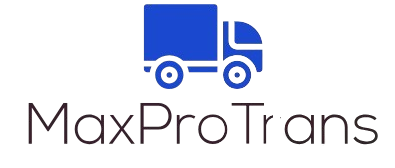The 4 Main Types of Freight Transportation | Complete Shipper’s Guide 2025
Explore the 4 main types of freight transportation—road, rail, air, and sea. Learn their benefits, use cases, and how to choose the best mode for your shipping needs.
In today’s globalized economy, efficient freight transportation is essential for businesses to move goods swiftly and cost-effectively. Whether you’re a seasoned logistics manager or a small business owner exploring shipping options, understanding the main modes of freight transport is key to optimizing your supply chain. In this guide, we’ll break down the four primary types of freight transportation—road, rail, air, and sea—and explore their advantages, limitations, and best use cases.
1. Road Freight (Truck Transportation)
Overview:
Road freight is the most common mode of transportation, ideal for short to medium distances. It offers flexible routing and door-to-door delivery, making it suitable for various cargo types.
Pros:
- High flexibility in routes and scheduling
- Ideal for last-mile delivery
- Cost-effective for regional shipments
Cons:
- Susceptible to traffic, weather, and road conditions
- Limited capacity compared to rail or sea
Best For:
- Domestic or cross-border shipments
- Perishable or time-sensitive goods
- Small to medium-sized cargo loads
2. Rail Freight
Overview:
Rail transportation is ideal for moving large volumes of goods over long distances. It’s commonly used for heavy commodities like coal, steel, or bulk agricultural products.
Pros:
- Cost-effective for bulk shipments
- Lower environmental impact
- Reliable schedules
Cons:
- Limited to regions with railway infrastructure
- Requires additional modes for last-mile delivery
Best For:
- Long-haul freight across continents
- Industrial and bulk goods
- Intermodal transportation strategies
3. Air Freight
Overview:
Air freight is the fastest mode of transportation, best suited for urgent or high-value shipments. It’s commonly used in industries like electronics, fashion, and pharmaceuticals.
Pros:
- Extremely fast delivery
- Global reach
- High security and lower risk of damage
Cons:
- Expensive compared to other modes
- Limited cargo capacity
- Affected by flight availability and weather
Best For:
- Time-sensitive deliveries
- High-value or lightweight products
- International express shipping
4. Sea Freight (Ocean Shipping)
Overview:
Sea freight is the most cost-effective way to ship large, heavy goods over long distances. It’s the backbone of international trade and supports the movement of goods in container ships or bulk carriers.
Pros:
- Economical for large shipments
- Suitable for oversized or hazardous cargo
- Eco-friendly for long distances
Cons:
- Slower transit times
- Port and customs delays possible
- Requires multimodal connections for inland delivery
Best For:
- International shipping of bulk goods
- Heavy or oversized equipment
- Long lead-time shipments
Choosing the Right Freight Transportation Mode
The best transportation mode depends on several factors, including:
- Distance and destination
- Urgency of delivery
- Size and weight of cargo
- Budget and cost constraints
- Type of goods (perishable, fragile, hazardous)
Many businesses use multimodal transport, combining two or more modes (e.g., rail + truck or sea + air) to optimize speed, cost, and efficiency.
Conclusion
Understanding the pros and cons of the four main types of freight transportation—road, rail, air, and sea—can help shippers make smarter logistics decisions. Each mode offers unique benefits and is best suited for specific shipping scenarios. By aligning your transportation strategy with your business goals, you can improve delivery times, reduce costs, and increase customer satisfaction.

